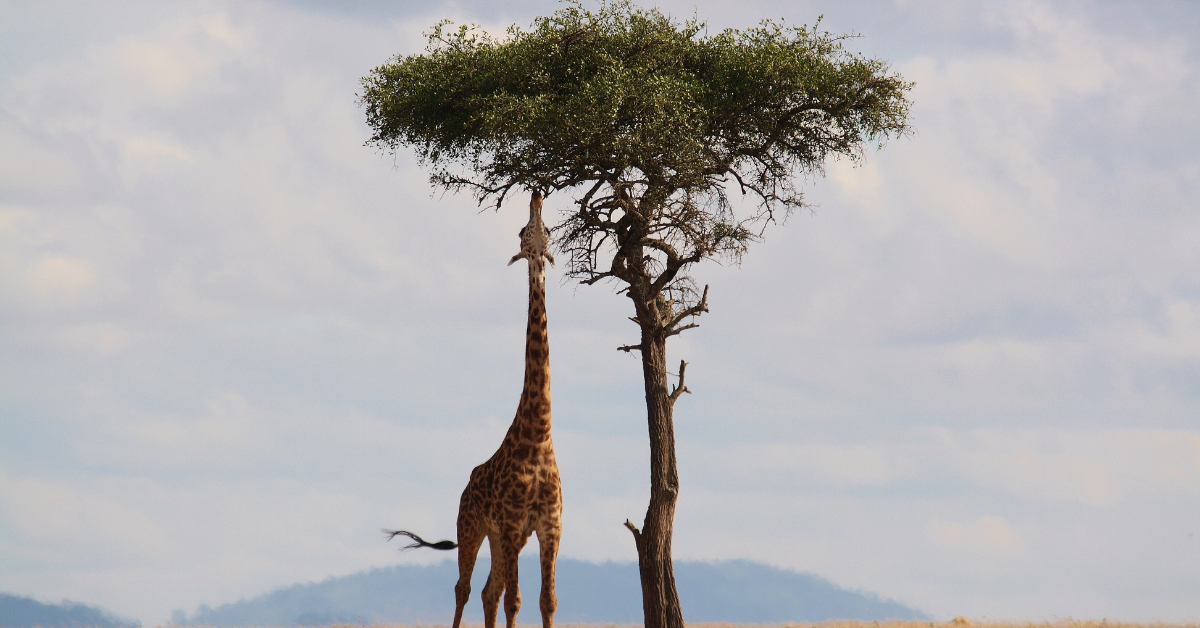
Learn how giraffe necks defy gravity with just seven vertebrae, and discover the surprising adaptations that make their extraordinary anatomy possible.

Learn how giraffe necks defy gravity with just seven vertebrae, and discover the surprising adaptations that make their extraordinary anatomy possible.
Are you ready to dive into the captivating world of the majestic Giraffe (Giraffa camelopardalis )? They say ‘knowledge is power,’ and in this article, we’ll empower you with fascinating insights into the lifestyle, diet, and more of these incredible creatures. From their towering height of 14 to 19.7 feet and their weight of 1,000 to 3,000 pounds, Giraffes are the giants of the land.

The topic of “do giraffes eat meat?” refers to the question of whether or not giraffes consume meat as part of their diet. This topic is of interest to those curious about the eating habits of these majestic animals and their role in the ecosystem.

Giraffes are unique browsers that use the leaves, young shoots, and twigs of a wide variety of trees and shrubs. Dicot forbs count for 1.5% of the food intake and grass 0.5%., flowers, fruits, and pods are preferred and are an important food resource. During wet growing seasons, feeding is restricted mainly to deciduous tree and shrub species.

Giraffes breed throughout the year, although birthing peaks have been observed in numerous populations, including Nairobi N. P. in Kenya Aug and Sep; Waza N. P.in Cameroon, November-January; Serengeti National Park, September; and Northern Namibia in December;

Taxonomy Of A Giraffe The giraffe is considered a polytypic species comprising eight subspecies. Based on pelage patterns, skull morphology, and mitochondrial DNA analysis described six or seven subspecies and the existence of a distinct northern and southern clade. Considerable uncertainty surrounds the geographic and taxonomic limits of all described subspecies. Pelage patterning within subspecies highlights this uncertainty.

The herd of giraffes is called a tower. Cows and subadults form breeding herds of 425 individuals, and although large herds may exist, they are rare. A herd of 239 was recorded in the Serengeti and herds of 48 and 68 in the Kruger National Park.

Neck and limb stretches in Giraffes require an unusual cardiovascular and respiratory system. The physiological adaptations of the circulatory system have been studied in detail by many. The hydrostatic pressure exerted by gravity on the column of blood in the neck, the heart is about 2m away from the head; necessitates an average systemic blood pressure of ~200 mm Hg compared with the standard of 100 mm Hg in other land mammals.

Giraffes breed all year round, although peak births have been observed in many populations including Nairobi N.P. in Kenya- August and September, Waza N.P. in Cameroon (November-January when acacia blooms, Serengeti N.P. (September ) and northern Namibia, December;

Giraffes don’t have horns they have ossicones. Official records do not classify giraffes as trophy animals because they lack true keratin horns. Both males and females have fixed ossicones of fully developed bones that are growing from the frontal plate of the skull, which is covered with epidermal skin. The ossicones sometimes break during fierce bullfighting, but unlike real horns, they do not grow back.